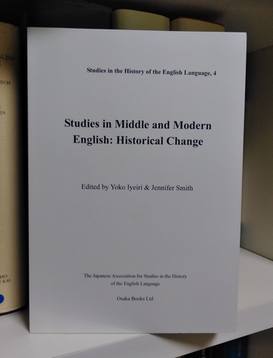“The Shift from Alway to Always in the History of English”
Bibliographical details
Iyeiri, Yoko. 2014. “The Shift from Alway to Always in the History of English”, in Studies in Middle and Modern English: Historical Change, ed. Yoko Iyeiri & Jennifer Smith, pp. 29-47. Suita: Osaka Books.
If you find it difficult to obtain this paper, please feel free to contact me.
(This is an article contributed to Studies in Middle and Modern English: Historical Change, the 4th volume of the booklet series of the Japanese Association for Studies in the History of the English Language. Some details of this volume are given on this page.)
From alway to always: the addition of –s
This paper discusses the shift from alway to always (s-added form) in the Early Modern English period. The analysis based on Early Modern English Prose Selections (EMEPS) shows that always (instead of alway) becomes the dominant form in the second half of the 16th century. It also shows that the shift is most probably a change from below in sociolinguistic terms.
Brief summary (YouTub)
Related publications
- Iyeiri, Yoko. 2011. “Early Modern English Prose Selections: Directions in Historical Corpus Linguistics”. Memoirs of the Faculty of Letters, Kyoto University 50: 133-199. (Downloadable PDF) — This article includes some descriptions of EMEPS
- Iyeiri, Yoko. 2016. “On Alway(s) and Algate(s) in Middle English Again”. Memoirs of the Faculty of Letters, Kyoto University 55: 61-80. (Downloadable PDF)

